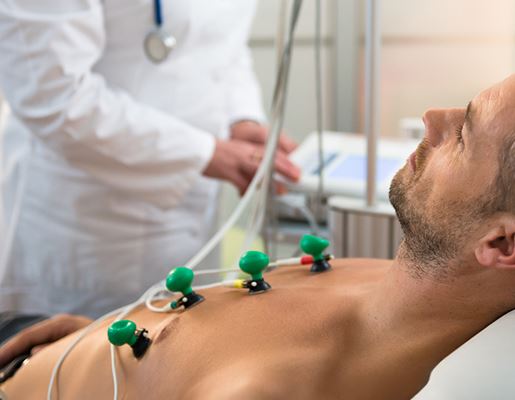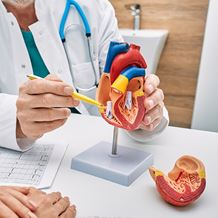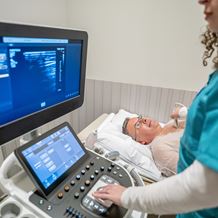What is pulmonary hypertension?
Pulmonary hypertension is a type of high blood pressure that specifically affects the arteries that supply blood to your lungs. Whilst it can impact adults of any age, it is more commonly found in patients with an existing heart or lung condition. When the arteries thicken or become narrow or stiff, it can restrict the blood flow and increase the blood pressure causing pulmonary hypertension. As a result, the right side of the heart has to work harder than normal to push blood through to the lungs, and this can cause the muscle to weaken and enlarge. Over time, pulmonary hypertension can cause serious damage to your heart as well as problems in other parts of your body. It can be a life-threatening condition if left untreated.
Symptoms and causes
There are five different types of pulmonary hypertension, and they are grouped according to cause.
- Pulmonary arterial hypertension – the arteries narrow and restrict the blood flow, increasing blood pressure in the pulmonary arteries.
- Left-sided heart disease – the entire blood circuit is affected, raising pressure in the pulmonary arteries.
- Lung disease (COPD) – the lung arteries do not operate normally, causing increased blood pressure.
- Scarring or blood clots in the lung.
- Blood or metabolic disorders and kidney disease.
Sometimes, the exact cause is unknown, but there are certain risk factors that include a family history, obesity, drug use and smoking. The onset of pulmonary hypertension is usually gradual with symptoms developing slowly over time. They tend to worsen as the disease progresses. Common symptoms and warning signs include shortness of breath, chest pain, dizziness, fatigue, swelling, weight gain and a bluish change in skin colour.
How is it diagnosed?
As pulmonary hypertension symptoms can be similar to other heart conditions, your doctor will perform a series of tests before making a diagnosis. The tests will examine the health of your heart and lungs and assess how efficiently they are working together. After a physical examination, diagnostic testing may include:
- Chest X-ray
- Electrocardiogram (ECG)
- Echocardiogram
- Heart catheterisation
- Angiogram
How is it treated?
Although there is no cure for pulmonary hypertension, there are good treatment pathways available to help you feel better, live for longer and improve your quality of life. Along with lifestyle changes, your doctor may recommend medication, oxygen therapy or in some cases surgery.

Other conditions
What's next?
If you have been experiencing heart-related symptoms, book an appointment with our cardiac services specialist today.
Our specialists in Cardiac Services
View all specialists





